We only had one full day to explore Phnom Penh, the capital of Cambodia, and although that obviously isn’t long enough to really get to know the city, this is a place which leaves strong first impressions and is steeped in contradictions. Compared to Saigon it is simultaneously much greener and easier to walk around – there is a long, pedestrianised river walk, somewhat calmer traffic, multiple parks and many other open spaces – but elsewhere it’s also dirtier, with more rubbish lying around than we’ve seen anywhere else. The primary focus for visitors is to learn about the Cambodian genocide – tuk tuk drivers will nonchalantly ask “Killing Fields?” as you walk by – and yet that past is less walled off from today’s politics than you might assume. Even the currency is double-headed: most prices are in dollars, but for change under $1 you will start to accumulate riel (the national currency which is still widely used in rural areas) and shops are unfazed if you want to mix and match the two.
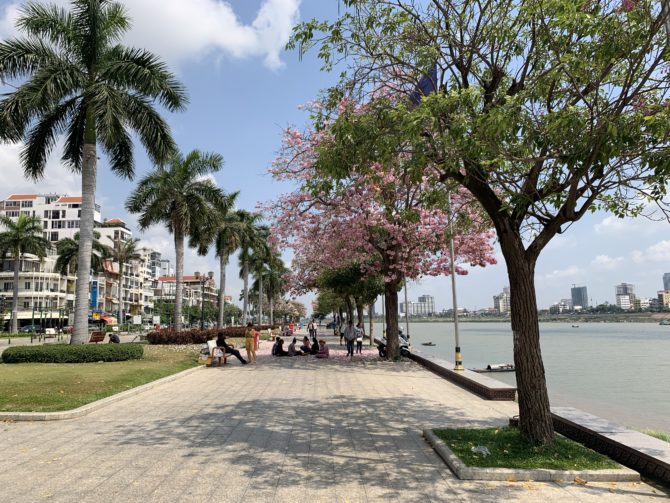
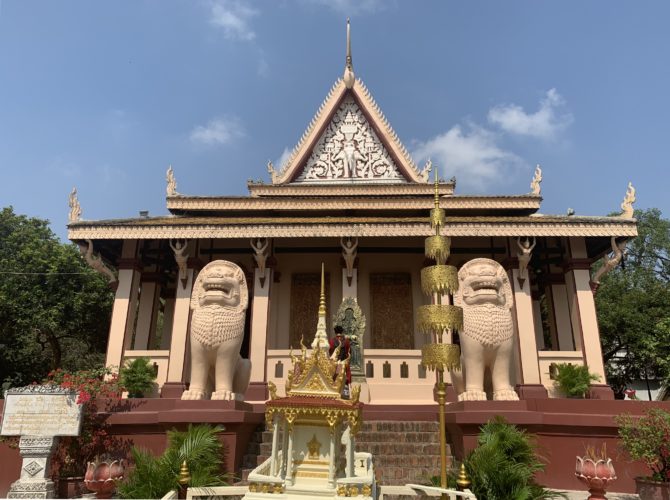

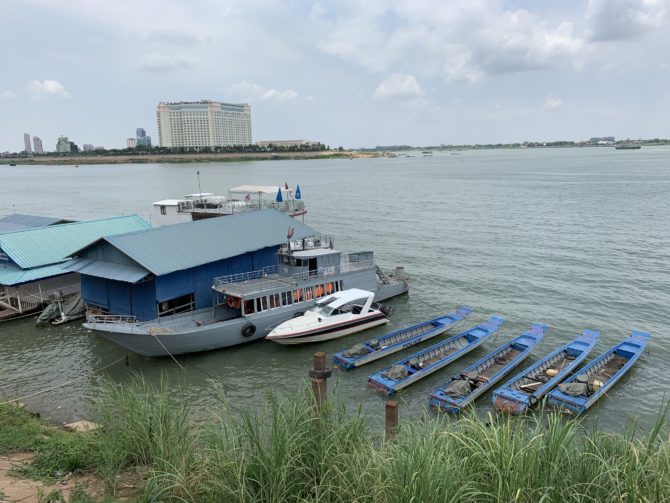

We really wanted to make the most of our day here, so we got up reasonably early and walked around until the sun got unreasonably hot, from the temple at the top of Wat Phnom hill (it’s a very small hill, but apparently the city’s only one) down the river walk and to Independence Monument, which is near another monument commemorating the friendship between Cambodia and Vietnam. The more I read about the history of Cambodia, the more complicated this ‘friendship’ seems.
Once the temperature reached its afternoon peak and we had exhausted our capacity for walking we made our way via tuk-tuk (you can use Grab to order tuk-tuks here) to the Tuol Sleng Genocide Museum. It’s on the site of a former high school which was turned into a concentration camp by the Khmer Rogue between 1975 and 1979. Across the country as a whole, somewhere between a fifth and a quarter of the entire population was killed during the Cambodian genocide, including from malnutrition and disease in the rural labour camps which the entire urban population was forced into. At this site, known as S-21, an estimated 20,000 people were tortured and killed with only a handful of survivors.
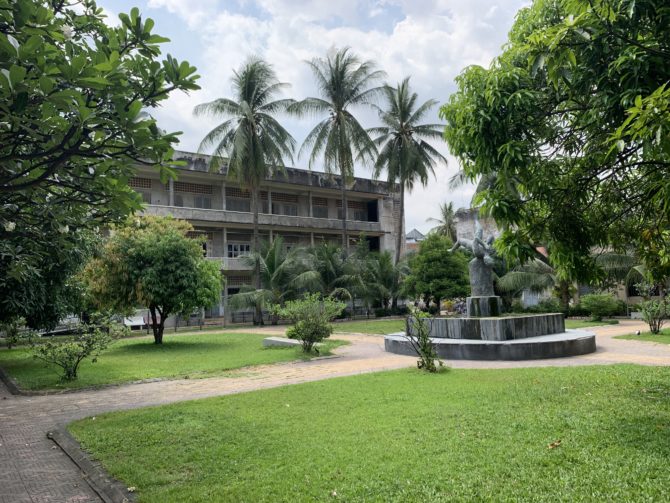
You can tell that it used to be a school. The buildings are long rectangular blocks, three storeys high, arranged around a central courtyard. The atmosphere is kept respectful by an audio guide, which most people chose to use, which means that people are walking around in silence as they listen. It’s exceptionally well done, with sensitive warnings so that you can skip the most brutal accounts of the torture itself, as I did. Just walking through the rooms has a nightmarish quality. I was more interested in learning about the background to the catastrophe, which I learnt a lot about from the audio guide and then continued to learn more that evening by starting to read a book about it (Pol Pol: The History of a Nightmare).
As is always the case with these modern, twentieth-century genocides it is the ‘bureaucracy of death’ which is the most chilling: the forms, the processes, the endless photos of prisoners wearing numbers for identification. I look at the photos and tried to pick out some individuality – who looks resigned, confused, frightened, defiant, powerless? But it didn’t matter; they were all killed just the same. What was unusual about the Khmer Rouge was their ideological extreme. This wasn’t ‘just’ a revolution, it was an attempt to completely eradicate the concept of the city and ‘return’ everyone to a fantasy agrarian state. Seen in that light, and with the photos of the bombed-out wreck of Phnom Penh in the 1970s, it made me appreciate this city’s modern existence all the more.
On the way back, our tuk tuk driver told us that he was going home to his village for Cambodian New Year. I asked if he was going to see family, but I think he said that they were all dead. It was difficult to make out what he was saying above the noise of the tuk tuk ride, and anywhere else I would have assumed that he must have actually said something else, but in Cambodia all this is recent memory. He went on to complain about the corrupt government in power today. And while there have been some trials, there is no clean slate – there never is, especially with civil wars – between the crimes of yesterday and the people in power now.
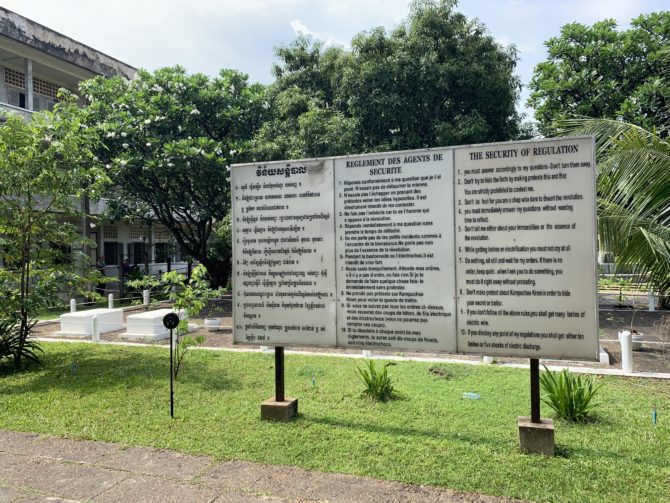
We spent most of the next day travelling from Phnom Penh to Siem Reap, the city which is the base for visiting the famous temples of Angkor. Angkor was the capital of the Khmer Empire between the 9th and 15th centuries and is now a huge, sprawling site of buildings and ruins. As I read more about Cambodia’s modern history, it’s clear that this sense of a ‘past greatness’ which was lost has been a huge and destructive influence, and this was reinforced by our visit to the Angkor National Museum. History is divided into the pre-Angkor, Angkor and post-Angkor periods and it is clear which one you are supposed to focus on, with dramatic background music accompanying sweeping videos of glorious temples like something out of a 1990s fantasy adventure movie. (And yes, there are many other countries which are obviously afflicted by the sense of a lost golden age, most definitely including Britain.)
In theory you are ‘supposed’ to spread your Angkor visit out over three days. But given the heat, we decided to pick one day to set our alarms for 4am, go see the sunrise at Angkor Wat and then enjoy whatever else came our way before we ran out of energy. Our tuk tuk driver, Thorn, was a friend of our AirBnb host and was amazing – picking us up in the dark and then driving us around five temples in total before we called it a day. So here is a short summary of what you might see if you visit Angkor. It’s most definitely not comprehensive, but did give us a good variety in the time we had.
Angkor Wat: The Big One
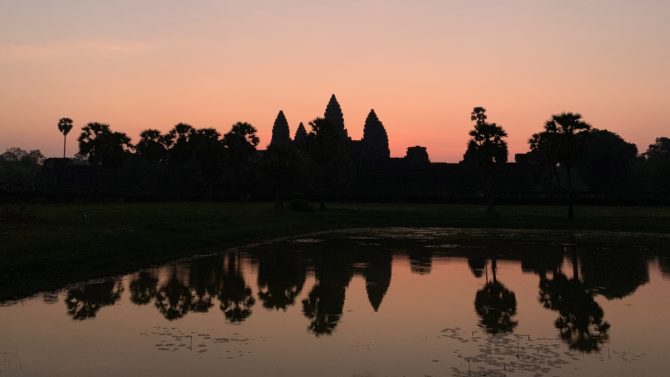
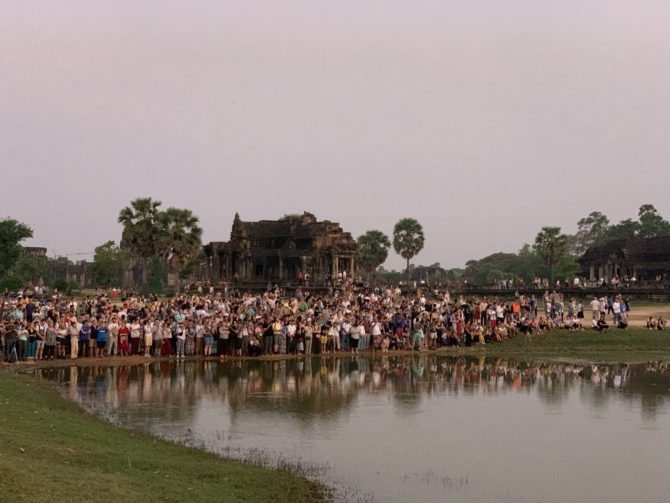
So this is the famous one, the one you’ve already heard of and came to Siem Reap to see in the first place. Originally a Hindu temple – and possibly also a mausoleum – it is now Buddhist and still an active place of worship, although the feeling inside is somewhere halfway between ‘in use’ and ‘abandoned’. I might call it ‘slumbering’. We watched the sunrise along with many other people and then climbed to the top of the central section of Angkor Wat; it’s such a huge structure that it didn’t really feel crowded despite all of the tourists. The walls are beautiful and decorated with huge bas reliefs of Indian epics.

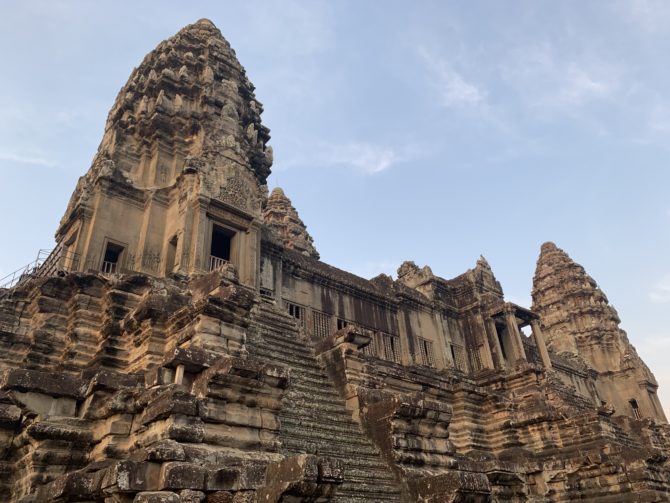
Prasat Bayon: Indiana Jones Adventures
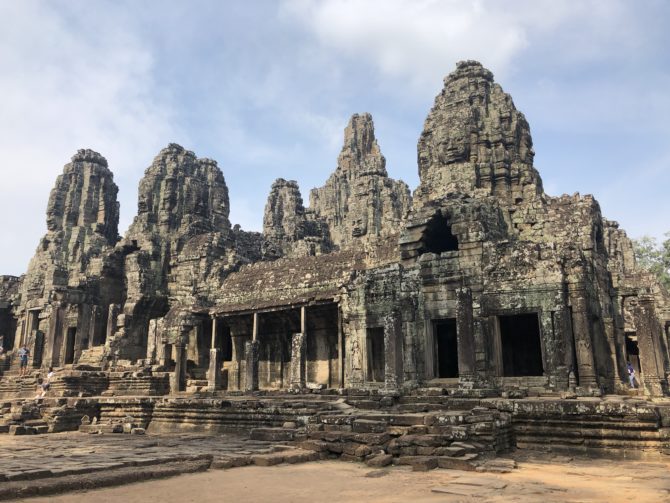
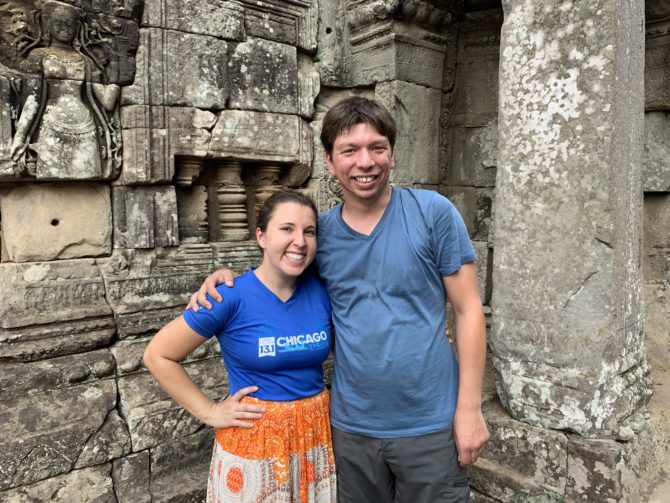
This was my favourite temple, and I’m not ashamed to put that down to the inescapably Indiana Jones vibe. Bayon, which lies in the middle of what was once the city of Angkor Thom, has a lot more of a ‘ruined’ vibe than Angkor Wat and feels more intimate to explore. Walking over wobbly bricks reminded me of a particularly well-made escape room, except of course this is real. The most striking parts are the giant faces which are built into the temple itself.

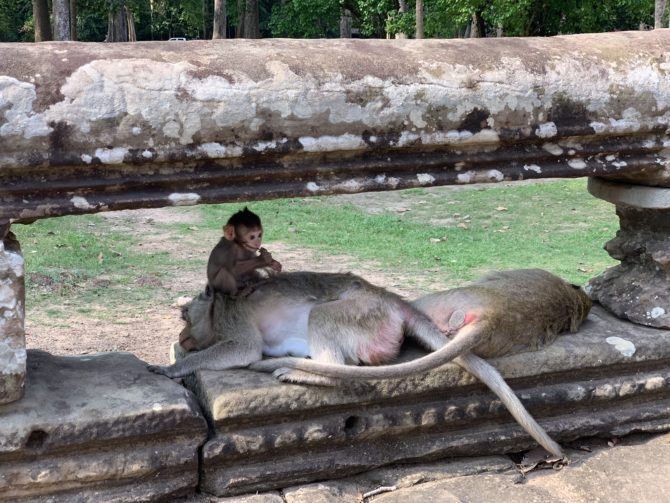
Prasat Baphuon: The Pyramid and the Portal
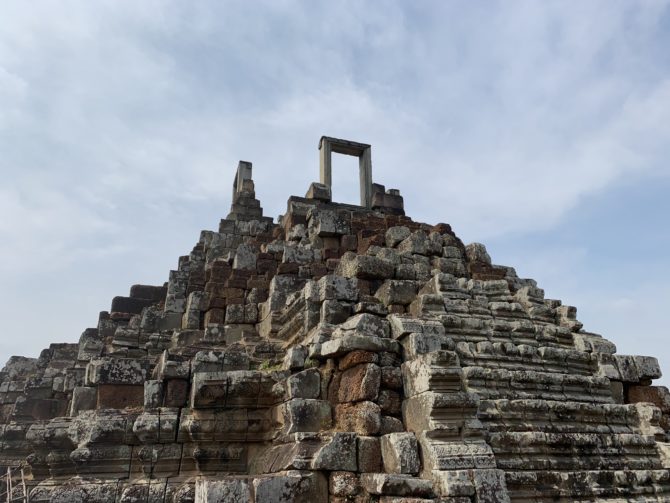
OK, so the archway at the top of Baphuon Temple is probably not actually a gateway to other worlds. But I would like to think so, especially since it took a couple of steep staircases to get up there in the first place and by this point in the day we were both starting to fade. Wisely, the Cambodian government does not allow you to actually reach the top and pass through the portal itself. (Look we didn’t pay for a tour guide so I can’t give you the full history of these temples. Although sometimes we did stand near to other groups and accidentally learn something.)
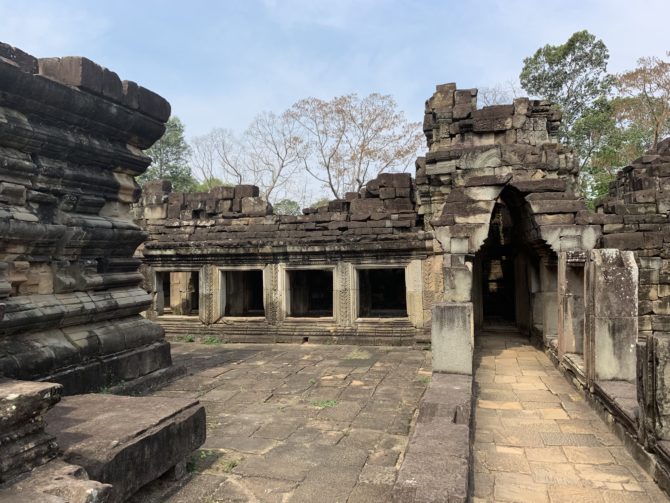
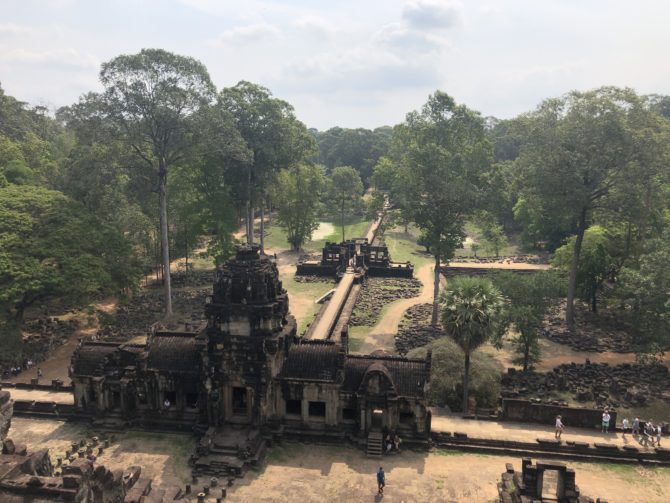
Ta Keo: Broken Chess Pieces
I was planning on calling this ‘The Boring Reconstructed One’ but that is overly harsh. Based on the before-and-after photos on the panel displays, however, the downside of restoring the structure (built entirely out of sandstone) is that it makes it somewhat less awe-inspiring to visit. I did like what looked like a box of giant broken chess pieces, though.
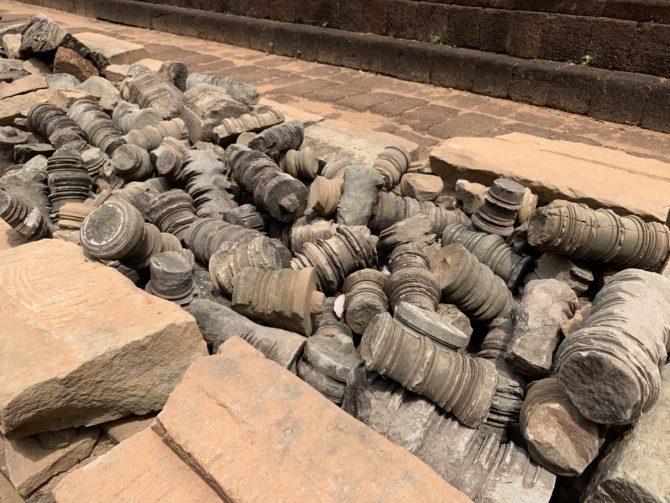
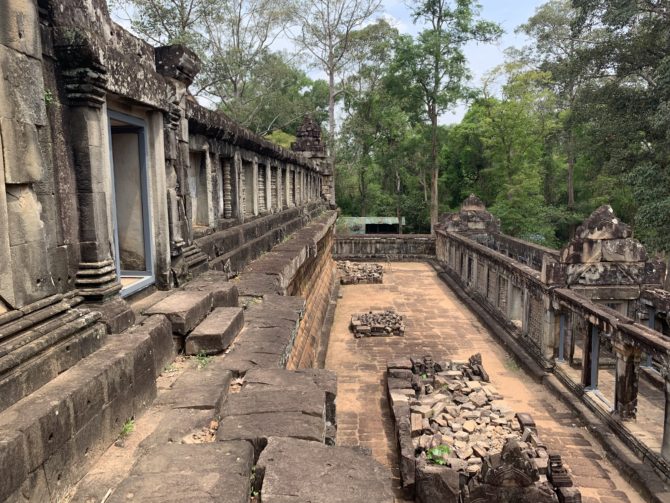
Ta Prohm: Collapse in a Forest
Finally, we reached Ta Prohm which is in the middle of a forest and presents a vision of the future where all the humans have died off and everything we ever built is slowly reclaimed by nature. According to Wikipedia, this is closest to the condition that almost all of the temples at Angkor fell into after the fall of the Khmer Empire, which must have been incredible when they were first rediscovered centuries later.
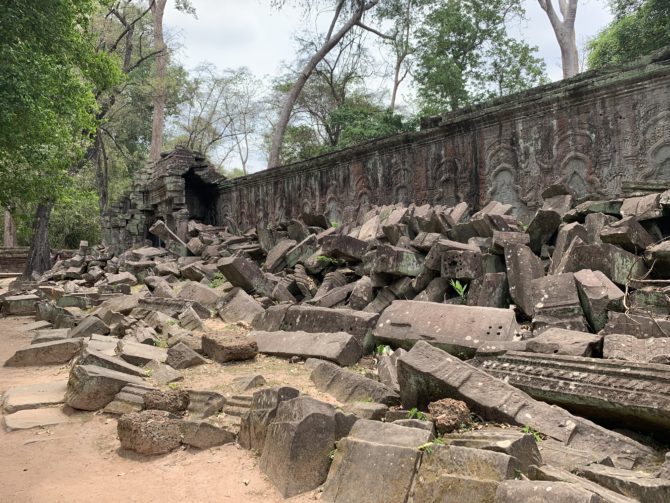
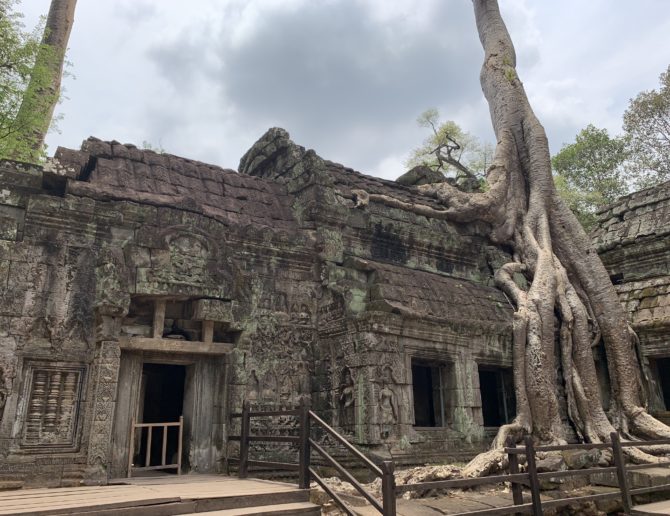
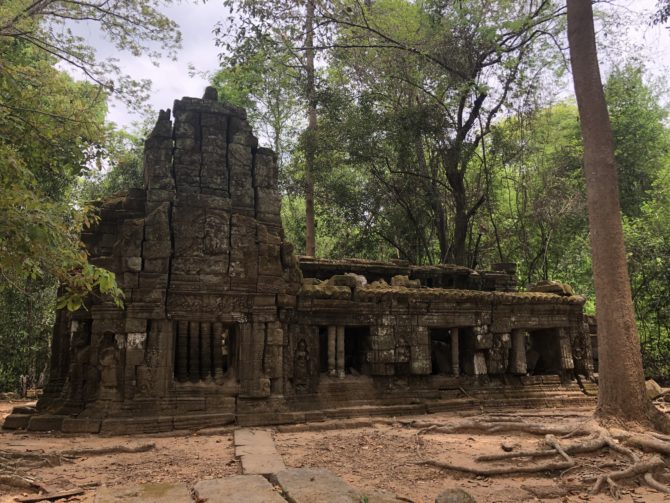
After our Angkor excursion I took an afternoon nap and woke up to discover that the power was out. Our AirBnb host confirmed that this was a city-wide problem (except for some parts of the tourist centre) caused by storms in Thailand and was expected to be fixed by 10pm that night, which it duly was. The disadvantage was that we lost our air-conditioning and fans for a few hours, but on the plus side it was pretty romantic and atmospheric at our candlelit dinner which our host very kindly offered to drive us to.
It is worth noting – and I have been looking for a place to shoehorn this in – that even in the middle of a power cut the 3G mobile data in Cambodia was not only working but still faster than much of the WiFi we used in South America. This has been true all over Southeast Asia and it really makes me wonder what is going on in South America to make the Internet so much slower.
The rest of our time in Siem Reap has been deliberately slow-paced. I had imagined a sleepy small town whose only existence was as a gateway to Angkor, but actually it is a fairly built-up city with a bustling tourist area downtown by the river. (It was here that we found a New Zealand bar serving real honest-to-god pies and mash, which might sound ill-suited to the weather but was amazing after so many months!)
Anyway, congratulations if you’ve made it through this epic post of civil war and ancient temples. It’s telling that of all the countries we’ve visited on our travels over the past five months it has been the extremes of Cambodia’s recent history which has driven me to pick up a book and go deeper into the history of the country, something which I will still be reading after we cross the border back into Thailand tomorrow. And in less than a week, I will be home!
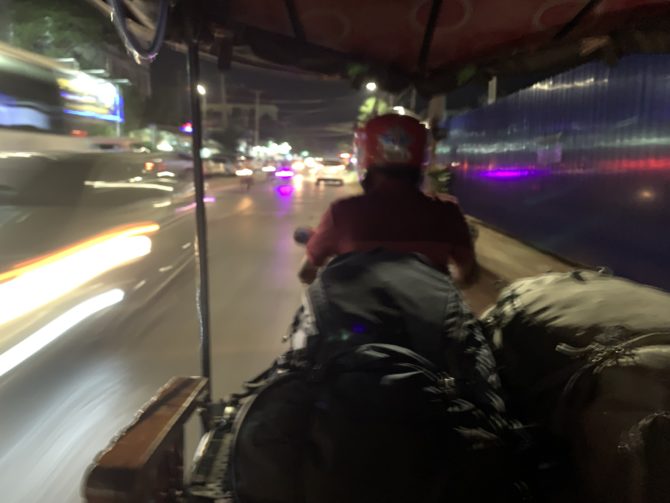
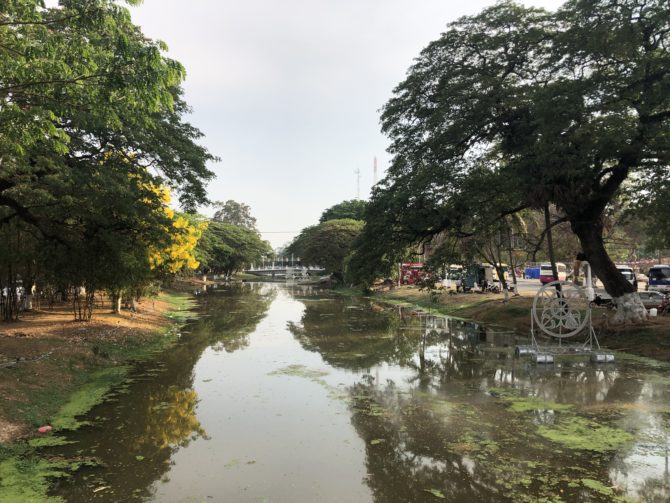

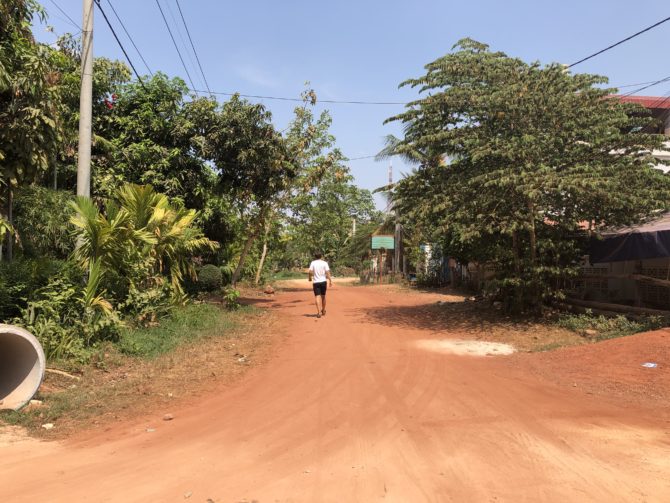
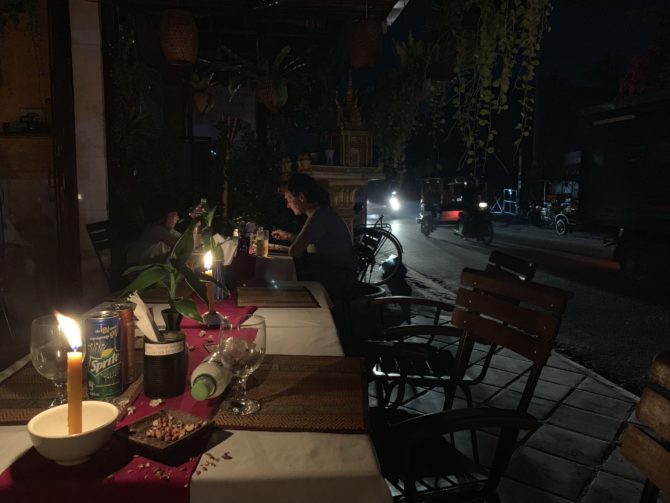
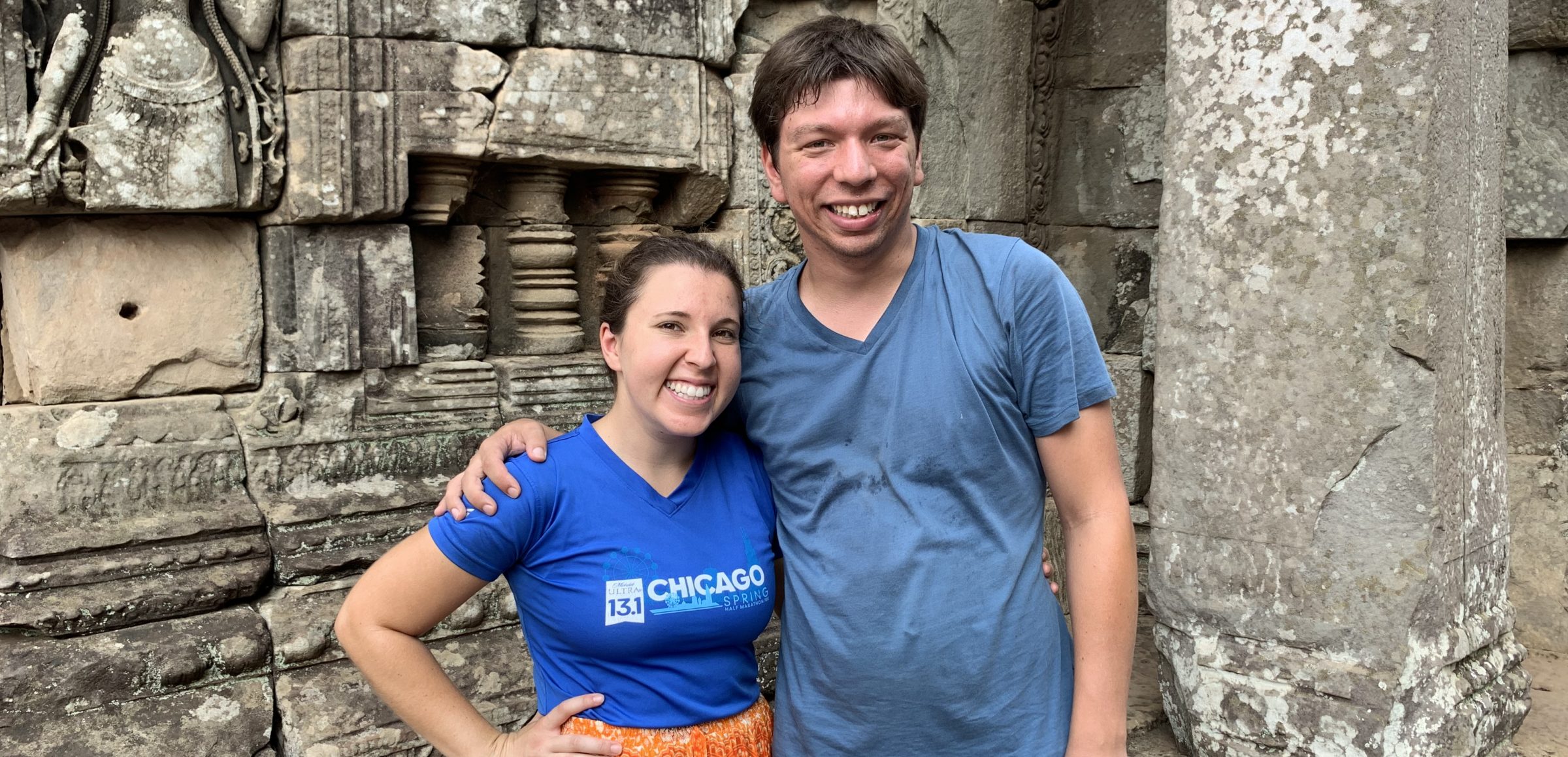


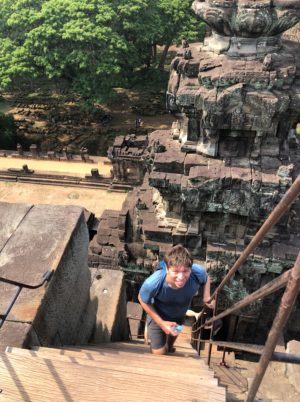

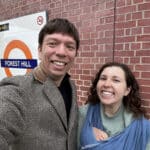



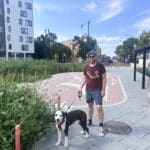

The temples were really incredible! So interesting to see it in a partially ruinous state. The faces for some reason freak me out a little and the monkeys were awesome. Kind reminded me of The Jungle Book and I laughed when the monkey pic came up. Really cool and thank you for getting up at 4 am to provide us these pictures. The picture of the tree growing on the temple is really awesome. The power of nature to reclaim. Btw the Tuk Tuk pic looks terrifying. A blaze of lights going by. What were you really going? 20 kmh? I love your comments about comparing continents based on their Internet speeds. Classic Dom. And it’s interesting how dark the background is in your candelit dinner pic. So used to light pollution everywhere.